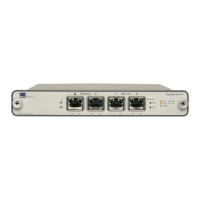1
10/100/1000 Bypass Switch with Heartbeat
Introduction
Net Optics 10/100/1000 Bypass Switches with Heartbeat
TM
provide perma-
nent and trouble-free access ports for in-line network security and monitoring
devices. The Bypass Switch automatically switches network trafc through
added in-line devices or bypasses devices that are about to be removed. With
a heartbeat, the 10/100/1000 Bypass Switch protects network trafc against
link, application, and power loss on the attached in-line device.
Link Fault Protection
The 10/100/1000 Bypass Switch with Heartbeat monitors the link to the
attached in-line device by sending a heartbeat packet to the device once every
second. If the Bypass Switch does not receive the heartbeat back, Fast Path
TM
switching automatically diverts network trafc to bypass the unresponsive
device—even if the device is still receiving power. The Bypass Switch contin-
ues to send the heartbeat and restores the trafc through the in-line device as
soon as the link is restored.
Uninterrupted Trafc
The 10/100/1000 Bypass Switch supports fail-safe monitoring with any
10/100/1000BaseT in-line device when it shares the same power source as
the in-line appliance. While the Bypass Switch is receiving power, it diverts
network trafc to attached in-line devices. In this state, all in-line trafc is
routed directly to the device connected to the Bypass Switch.
When the 10/100/1000 Bypass Switch loses power, in-line trafc continues
to ow through the network link, but is no longer routed through the device.
This allows the network devices to be removed and replaced without network
downtime. Once power is restored to the Bypass Switch, network trafc is
seamlessly diverted to the in-line device, allowing it to resume its critical
functions.
Link Fault Detect
TM
For superior reliability, the Bypass Switch features Link Fault Detect which
gives the devices connected to the Tap critical information about link status. If
either side of the bi-directional link fails, the Tap immediately communicates
the fault to both devices, reducing the time required to activate a redundant
path.

